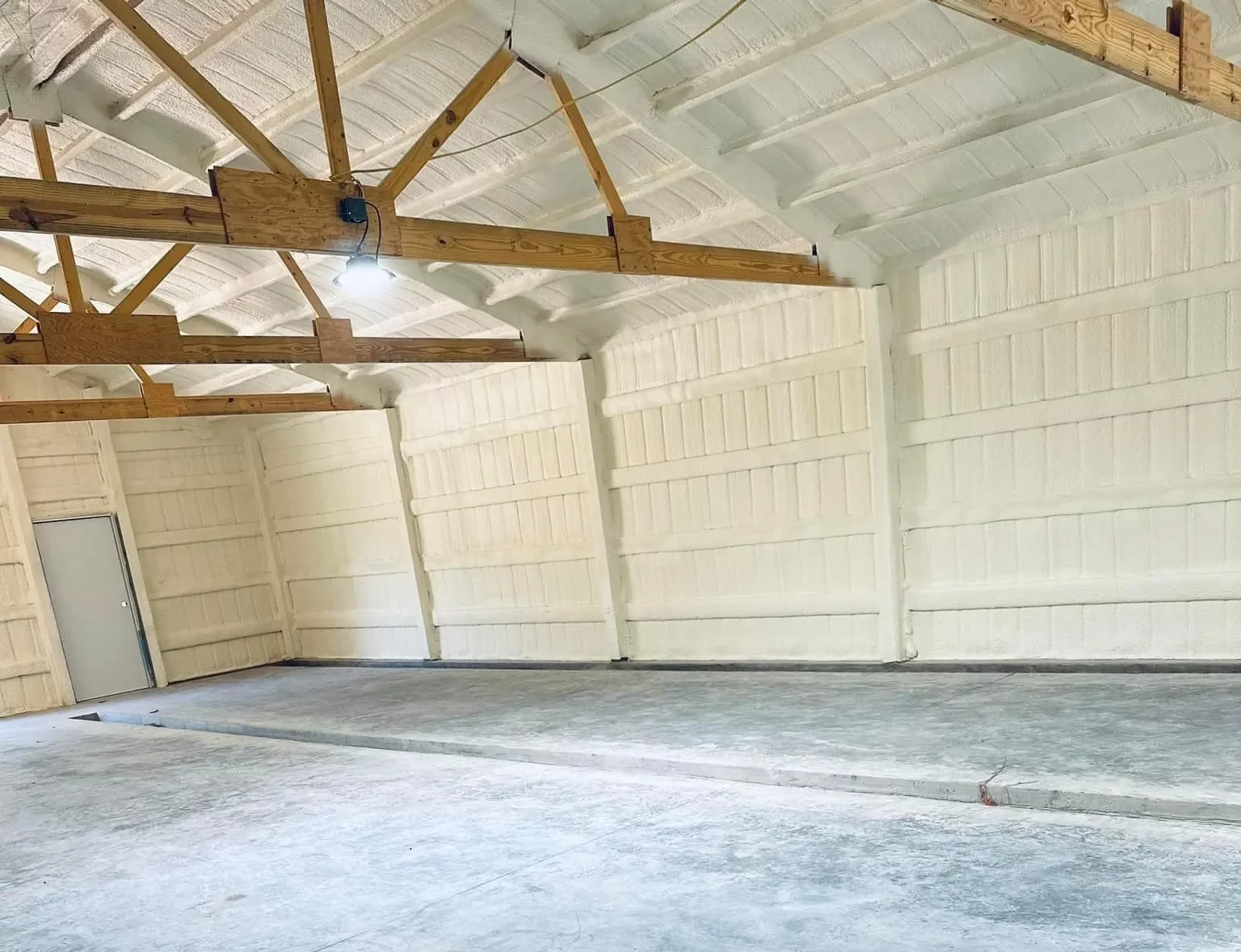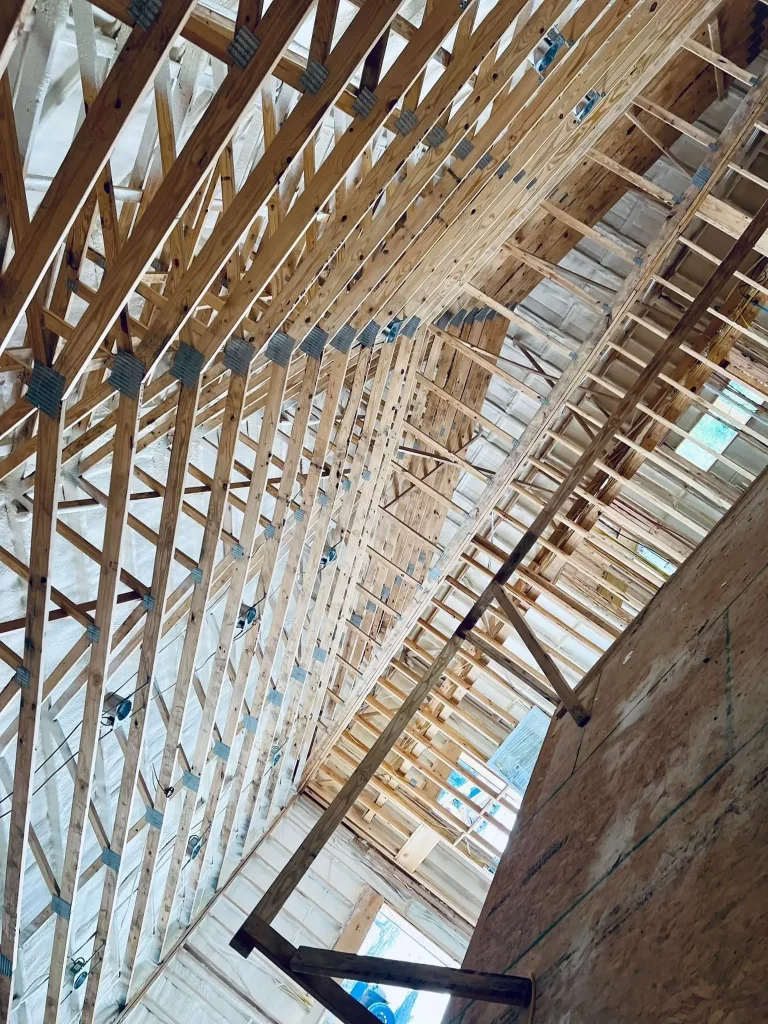
Ice dams form when snow melts on a warm roof and refreezes at the edges, creating barriers that trap water and damage homes. Proper insulation stops this by keeping attic temperatures low and reducing heat escape from the living space. In Little Rock, where winters bring occasional freezes after mild days, attic insulation maintains an even temperature gradient to avoid uneven roof warming.
This article explains the process step by step, from causes to prevention strategies tailored to the area’s climate. Readers gain practical steps to protect their homes based on established building practices in Arkansas.
Information here draws from hands-on work with local homes, where patterns in ice dam issues reveal clear solutions through targeted insulation upgrades.
Ice dams start with heat loss through the roof. Warm air rises from heated rooms into the attic, warming the underside of the roof deck. This heat melts snow above, but cold outdoor air refreezes the water at the eaves, building up thick ice.
In Little Rock, sudden temperature drops after thaws make this worse. Homes with poor attic seals see more issues because drafts pull in warm air. Data from the National Oceanic and Atmospheric Administration shows Little Rock averages 10-15 days below freezing each winter, enough for snow buildup on roofs with slopes under 4:12 pitch.
Bonus Tip: Check attic vents during fall inspections. Blocked ones trap heat and speed up melting.
These general mechanisms are particularly relevant in Little Rock due to its variable winter weather. Little Rock winters mix mild days around 50°F with nights dipping to 25°F or lower. This cycle encourages ice dams more than steady cold snaps elsewhere. High humidity from the nearby Arkansas River adds moisture to snow, making it stickier and harder to shed naturally.
Local homes, often built with energy-efficient features, still suffer if insulation sits below recommended levels. A study by the U.S. Department of Energy notes that uninsulated attics in humid regions like the South lose up to 25% more heat, worsening the melt-refreeze pattern.
Insulation acts as a barrier against heat transfer. By adding materials like fiberglass batts or blown-in cellulose to the attic floor, heat stays in the living areas. The roof deck remains closer to outdoor temperatures, letting snow melt slowly or not at all.
Effective insulation reaches R-38 to R-49 in Arkansas, per International Energy Conservation Code guidelines. This level cuts heat loss by 30-50%, based on tests in similar climates. Air sealing around recessed lights and chimneys boosts results further.
Here’s a table comparing common insulation types for attic use:
| Insulation Type | R-Value per Inch | Pros | Cons |
|---|---|---|---|
| Fiberglass Batts | 3.1-4.3 | Easy to install, affordable | Can settle over time, needs sealing |
| Blown-in Cellulose | 3.2-3.8 | Fills gaps well, eco-friendly | Requires professional blowing equipment |
| Spray Foam | 6.0-7.0 | High performance, seals air leaks | Higher cost, needs skilled application |
In regions like the South, including Arkansas, homes with upgraded insulation see 15% fewer winter roof repairs, according to a Oak Ridge National Laboratory report on energy efficiency.
Bonus Tip: Combine insulation with ridge and soffit vents. This setup removes moist air that could condense on cold surfaces.
Assess current attic conditions first. Measure existing insulation depth; less than 10 inches often signals a need for more. Factor in roof pitch and material—flat roofs hold snow longer.
Once you’ve evaluated your attic, consider the financial aspect. Budget plays a role. Basic upgrades cost $1,500-$3,000 for a 1,500 sq ft attic, but tax credits cover up to 30% under federal programs. Long-term savings hit $200 yearly on energy bills.
Check for structural issues like weak joists that might not support added weight. Hire an inspector familiar with Little Rock’s clay soils, which shift foundations and affect roof stability.
Consider ventilation needs. Poor airflow traps heat despite good insulation. Aim for 1 sq ft of vent area per 150 sq ft of attic space.
Finally, weigh DIY versus pro installation. Blown-in types demand equipment, while batts suit handy homeowners, but errors lead to moisture problems.

Watch for icicles longer than six inches or water stains inside near exterior walls. Both indicate heat loss that’s allowing snow to melt and refreeze on the roof.
No. Insulation helps prevent ice-related leaks, but it won’t stop damage from aging materials, missing shingles, or storm wear. For best protection, combine upgrades with regular gutter and roof maintenance.
Bonus Tip: During heavy snow, gently remove buildup from eaves with a roof rake to reduce immediate risks.
Insulation keeps attics cool and prevents the heat buildup that starts ice dams. In Little Rock, focus on R-38+ levels, air sealing, and proper venting to match the local weather patterns. Evaluate your home’s setup against these steps to avoid winter damage.
Contact LMC Insulation at (479) 351-6175 or [email protected] for questions on attic assessments. Details on local code compliance and energy savings help inform next moves. Professionals review specific home needs to align with Arkansas winters. This step clarifies options without commitment.
Fluctuating temperatures trigger them. Mild afternoons warm roofs enough to melt snow, but overnight freezes create dams. Local humidity keeps snow wetter, increasing the load on gutters.
R-38 minimum for attics, but R-49 works better in variable winters. This matches codes and handles occasional sub-20°F nights without excessive heat loss.
Yes, water backs up under shingles, rotting sheathing and leaking into walls. Repairs average $4,500, per Insurance Institute for Business & Home Safety data.
Insulation forms the base, but seal air leaks and ensure ventilation. Without these, heat finds paths to the roof anyway.
Probe the attic floor—if you hit the joists quickly, depth is low. Energy bills spiking 20% in winter also signal poor performance.